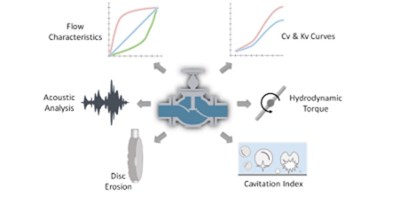When the control valves are used in liquid service, they may experience localized cavitation. Cavitation consists of the formation of liquid vapor cavities when the local static pressure drops to the liquid vapor pressure. The vapor cavity collapses once localized damage to the valve and surrounding area occurs. Valve designs that reduce cavitation are based on empirical evidence and accumulated experience. A major impediment to understanding valve cavitation is the limited visual access a researcher has to the flow field within the valve. Typically the intensity and location of cavitation effects must be inferred from other measurements such as valve noise, vibration, or damage to the valve assembly.
Dervos butterfly valves may be used to control flow in pipes if they are throttled in angles where the valve works stable without noise or vibration, i.e., cavitation free.


